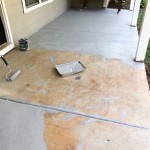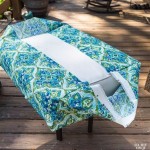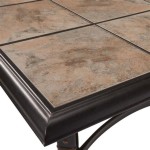Stain and Seal Concrete Patio: Enhancing Durability and Aesthetics
Concrete patios are a popular choice for outdoor living spaces due to their affordability, versatility, and durability. However, untreated concrete is susceptible to staining, weathering, and cracking over time. To preserve the appearance and extend the lifespan of a concrete patio, staining and sealing are crucial steps. This article will explore the benefits of staining and sealing concrete patios, the different types of stains and sealers available, and the proper procedures for application.
Staining and sealing concrete patios not only enhance their visual appeal but also provide essential protection against various environmental factors. A well-maintained patio can significantly improve a home's curb appeal and overall value. The process involves applying a stain to impart color and character to the concrete surface, followed by a sealer to protect it from moisture, stains, and abrasion. The combination of these two treatments results in a durable and aesthetically pleasing outdoor living space that requires minimal maintenance.
Key Benefits of Staining and Sealing a Concrete Patio
Staining and sealing a concrete patio offer numerous advantages, ranging from aesthetic improvements to enhanced durability. Understanding these benefits is crucial in making an informed decision about patio maintenance and preservation.
Enhanced Aesthetic Value: Staining allows for customization of the concrete surface, transforming a plain gray slab into a visually appealing feature. A wide range of colors and patterns can be achieved through staining, allowing homeowners to match the patio's appearance to their personal preferences and the surrounding landscape. Stains can mimic the look of natural stone, brick, or tile, providing a cost-effective alternative to these more expensive materials. The ability to create unique designs and textures further enhances the aesthetic appeal of the patio.
Protection Against Stains and Moisture: Untreated concrete is porous, making it susceptible to absorbing liquids such as water, oil, and food spills. These spills can lead to unsightly stains that are difficult to remove. Sealing the concrete creates a barrier that prevents liquids from penetrating the surface, making it easier to clean and maintain. The sealer also protects against the damaging effects of moisture, which can lead to cracking, spalling, and the growth of mold and mildew.
Increased Durability and Lifespan: Sealing protects the concrete from the damaging effects of freeze-thaw cycles, which are common in many climates. When water penetrates the concrete and freezes, it expands, causing stress that can lead to cracking and deterioration. A sealer minimizes water absorption, reducing the risk of freeze-thaw damage. Additionally, the sealer protects the concrete from abrasion and wear, extending its lifespan and reducing the need for costly repairs or replacements.
Reduced Maintenance: Staining and sealing simplify the maintenance of a concrete patio. The sealed surface is easier to clean, requiring only occasional sweeping and washing with mild soap and water. The protective barrier prevents stains from penetrating the concrete, making spills easier to wipe up. This reduces the need for harsh cleaning chemicals and labor-intensive scrubbing. Overall, a stained and sealed patio requires significantly less maintenance than an untreated concrete surface.
Types of Concrete Stains: Choosing the Right Option
Selecting the appropriate type of concrete stain is essential for achieving the desired aesthetic effect and ensuring the longevity of the finished patio. Different types of stains offer varying levels of color intensity, durability, and ease of application. It is important to consider the specific characteristics of each type of stain when making a choice.
Acid-Based Stains: Acid-based stains react chemically with the concrete, creating a permanent color change. These stains penetrate deeply into the concrete, producing a mottled, variegated appearance that resembles natural stone. Acid-based stains are known for their durability and resistance to fading and chipping. However, they can be more challenging to apply and require careful surface preparation. Safety precautions are necessary when working with acid-based stains due to their corrosive nature. Neutralization of the acid is required after staining and before sealing.
Water-Based Stains: Water-based stains are a safer and more environmentally friendly alternative to acid-based stains. They offer a wider range of colors and are easier to apply. Water-based stains penetrate the concrete to a lesser extent than acid-based stains, resulting in a more uniform color. While they may not be as durable as acid-based stains, they still provide good color retention and resistance to fading. Water-based stains are a good choice for homeowners who prefer a less hazardous and easier-to-use staining option.
Acrylic Stains: Acrylic stains are a type of water-based stain that contains acrylic polymers. These polymers enhance the stain's durability and adhesion to the concrete surface. Acrylic stains offer excellent color retention and resistance to UV damage. They are also available in a wide variety of colors and can be applied using various techniques to create different effects. Acrylic stains are a popular choice for both interior and exterior concrete surfaces.
Epoxy Stains: Epoxy stains offer excellent durability and resistance to chemicals and abrasion. They are often used in high-traffic areas where a durable and long-lasting finish is required. Epoxy stains create a glossy, hard surface that is easy to clean and maintain. However, they can be more expensive and challenging to apply than other types of stains. Epoxy stains are a good choice for industrial and commercial applications, as well as residential patios that require maximum durability.
Types of Concrete Sealers: Protecting Your Investment
Choosing the right concrete sealer is as crucial as selecting the appropriate stain. The sealer provides a protective barrier that shields the concrete from moisture, stains, and abrasion. Different types of sealers offer varying levels of protection, durability, and aesthetic qualities. It is essential to consider these factors when selecting a sealer for a concrete patio.
Acrylic Sealers: Acrylic sealers are a cost-effective option that provides good protection against water and stains. They are easy to apply and offer a clear, glossy finish that enhances the appearance of the stained concrete. Acrylic sealers are available in solvent-based and water-based formulations. Solvent-based acrylic sealers offer better durability and water resistance, while water-based acrylic sealers are more environmentally friendly and easier to clean up. Acrylic sealers typically require reapplication every one to three years, depending on the level of traffic and exposure to the elements.
Epoxy Sealers: Epoxy sealers offer superior durability and chemical resistance compared to acrylic sealers. They create a hard, glossy surface that is resistant to abrasion, stains, and chemicals. Epoxy sealers are often used in commercial and industrial settings where a high level of protection is required. They are more expensive and difficult to apply than acrylic sealers, but they provide a longer-lasting and more durable finish. Epoxy sealers are a good choice for patios that are subject to heavy use or exposure to harsh chemicals.
Polyurethane Sealers: Polyurethane sealers offer excellent abrasion resistance and UV protection. They are commonly used on exterior concrete surfaces that are exposed to sunlight and heavy traffic. Polyurethane sealers are available in water-based and solvent-based formulations. Water-based polyurethane sealers are more environmentally friendly and easier to clean up, while solvent-based polyurethane sealers offer better durability and water resistance. Polyurethane sealers typically require reapplication every three to five years, depending on the level of wear and tear.
Penetrating Sealers: Penetrating sealers, such as silanes and siloxanes, penetrate the concrete surface and create a hydrophobic barrier that repels water and prevents stains. These sealers do not change the appearance of the concrete and are invisible once applied. Penetrating sealers are a good choice for patios where a natural look is desired. They offer excellent protection against water damage and freeze-thaw cycles. Penetrating sealers typically require reapplication every five to ten years, depending on the specific product and environmental conditions.
Selecting the right sealer for a concrete patio depends on various factors, including the type of stain used, the level of traffic, the exposure to the elements, and the desired aesthetic effect. It is important to carefully consider these factors and consult with a professional if needed to ensure that the chosen sealer provides the optimal level of protection and durability.
The decision regarding the concrete patio often depends on the homeowner's preferences and priorities, but the protection and aesthetic appeal of staining and sealing are undeniable. By carefully selecting the right stain and sealer and following proper application procedures, it is possible to transform a plain concrete patio into a beautiful and durable outdoor living space that will provide years of enjoyment.

Concrete Stain And Sealer Patio Makeover Exchange

How To Stain Concrete Simple Diy Method Youtube

How To Stain Concrete Floors And Patios The Home

How To Stain Concrete Patio Direct Colors

Outdoor Concrete Stains Pros And Cons Decor

How To Stain A Concrete Patio Easy Diy Project The Garden Glove

How To Stain Concrete Floors And Patios The Home

How To Re Seal A Stained Concrete Patio Youtube

Stained Concrete Patios Before After

How To Stain Concrete Floors And Patios The Home
See Also








